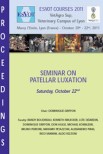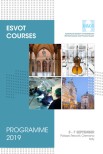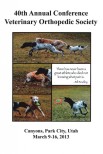Objective: To investigate differences in outcome measures between radius and ulna fractures stabilized with minimally invasive plate osteosynthesis (MIPO) or open reduction and plate stabilization (ORPS) and to determine if certain preoperative factors such as the dog's age and weight, fracture morphology, or the attending surgeon influenced which application method was employed.
Study design: Retrospective clinical outcome study.
Sample population: Dogs undergoing plate stabilization of antebrachial fractures.
Methods: Medical records and radiographs of dogs that underwent MIPO or ORPS of unilateral antebrachial fractures were reviewed. Signalment, fracture characteristics, attending surgeon, implant type, postoperative radial alignment and length, time to clinical union, and explant, were compared between application groups.
Results: One hundred and five dogs (73 ORPS; 32 MIPO) were included. The proximal extent of the fracture (p = .004) and the attending surgeon (p < .001) were identified as factors influencing the decision to perform MIPO or ORPS. Median surgical time was 85 (ORPS) and 130 (MIPO) min (p < .001). The discrepancy between contralateral and postoperative radial frontal plane alignment (p = .047), sagittal plane alignment (p = .771), and radial length (p = .183) did not differ between application groups. Three (4.1%) fractures in the ORPS group and eight (25%) in the MIPO group underwent explant (p = .003). There was also an association between open (p < .001) or comminuted (p = .007) fractures and explant of the plate and screws.
Conclusion: The results do not corroborate several of the purported advantages ascribed to MIPO.
Clinical relevance: The authors would advocate that additional, well-designed, prospective clinical studies comparing MIPO to ORPS are warranted.









